Even as monarchies continue to make their way out to give place to democracies, the abodes of presidents are the most sought after installations all across the globe.
These aesthetic masterpieces become the symbols of national pride, attract huge influx of tourists, and also serve as the seat of power in some cases.
A survey recently published in Huffingtonpost.com selected the most stunning presidential palaces in the world. "Whether acting as the seat of the government, the head of state's home or, in some cases, as both, presidential palaces represent a stunning melange of architectural styles, from Baroque to neoclassical to merely modern," the report noted.
Rediff.com takes a look at some of the most awesome presidential palaces in the world:
Rashtrapati Bhavan, India
The Rashtrapati Bhavan, earlier known as the Viceroy's House, is the largest head of the state residence in the world.
Located at Raisina Hills in Lutyen's Delhi, the sprawling mansion is built on an area of 200,000 square feet, with four floors and 360 rooms.
British architect Edwin Landseer Lutyens in 1914 oversaw the construction of the mansion which is inspired by Roman and Mughal architecture, amalgamated with Hindu, Buddhist and Jain traditions.
The Mughal Gardens situated at the back of the Rashtrapati Bhavan, incorporates both Mughal and English landscaping styles. It displays numerous types of flowers and is open to public in February every year.
...
Palacio do Planalto, Brazil
Brazil's seat of power located in capital Brasilia, the Pal cio do Planalto is built on a total area of 390,000 sq ft with four buildings inside the complex.
The architect of the Palacio do Planalto was Oscar Niemeyer, who designed most of the important buildings in Bras lia.
The idea was to project an image of simplicity and modernity using fine lines and waves to compose the columns and exterior structures.
Presidential Office Building, Taiwan
The Presidential Office Building houses the Office of the President of the Republic of China (Taiwan).
The building, located in the Zhongzheng District in the national capital of Taipei, was designed by architect Uheiji Nagano during the period of Japanese rule of Taiwan (1895 1945).
Damaged in Allied bombing during World War II, the building was restored after the war by Chen Yi, the Governor-General of the Taiwan province. It became the Presidential Office in 1950 after the Republic of China lost control of mainland China and relocated the nation's capital to Taipei City at the end of the Chinese Civil War.
The two-part main building, six stories high, mainly houses government offices and maintenance services. The office wings feature balconies and long corridor that allow view of the sunlit North and South Gardens.
The 60-meter tower at the center of the building was the tallest structure in the Taipei Basin during Japanese rule. When the Nationalist regime took power, a platform was built at the top floor to enable martial flag-raising ceremonies.
Casa Rosada or 'Pink House', Argentina
The Casa Rosada (The Pink House) is the official seat of the executive branch of the government of Argentina, and of the offices of the President.
Its characteristic colour is pink, and is considered one of the most emblematic buildings in Buenos Aires. It also has a museum, with objects related to the presidents of the country. It has been declared a National Historic Monument of Argentina.
The Casa Rosada sits at the eastern end of the Plaza de Mayo, a large square which since the 1580 foundation of Buenos Aires has been surrounded by many of the most important political institutions of the city and of Argentina.
Quirinal Palace, Italy
The Quirinal Palace is a historical building in Rome, Italy, the current official residence of the President of the Italian Republic. It is located on the Quirinal Hill, the tallest of the seven hills of Rome. It housed thirty popes, four kings and eleven presidents of the Italian Republic.
The current site of the palace has been in use since Roman times, as excavations in the gardens testify. On this hill that the Romans built temples to several deities, from the Flora to Quirinus, after whom the hill was named.
The palace, located on the Via del Quirinale and facing onto the Piazza del Quirinale, was built in 1583 by Pope Gregory XIII as a papal summer residence. The pope wanted to find a location which would have been far away from the humidity and stench coming from the river Tiber and the unhealthy conditions of the Lateran, therefore the Quirinal hill was one of the most suitable places in Rome.
The fa ade was designed by Domenico Fontana. Its Great Chapel was designed by Carlo Maderno. It contains frescos by Guido Reni, but the most famous fresco is the Blessing Christ by Melozzo da Forl , placed over the stairs. Its grounds include a famous set of gardens laid out in the 18th century.
Presidential Palace, Vietnam
The Presidential Palace of Vietnam, located in the city of Hanoi, was built between 1900 and 1906 to house the French Governor-General of Indochina.
It was constructed by Auguste Henri Vildieu, the official French architect for Vietnam. Like most French Colonial architecture, the palace is pointedly European. The only visual cues that it is located in Vietnam at all are mango trees growing on the grounds.
The yellow palace stands behind wrought iron gates flanked by sentry boxes. It also incorporates certain elements of Italian Renaissance design.
When Vietnam achieved independence in 1954, Ho Chi Minh refused to live in the grand structure for symbolic reasons, although he still received state guests there, and he eventually built a traditional Vietnamese stilt house and carp pond on the grounds. His house and the grounds have been made into the Presidential Palace Historical Site in 1975.
The palace hosts government meetings. It is not open to the public, although one may walk around the grounds for a fee.
Vilnius' Presidential Palace, Lithuania
The Presidential Palace located in Vilnius Old Town, is the official office and eventual official residence of the President of Lithuania.
The palace dates back to the 14th century and during its history it has undergone various reconstructions, supervised by prominent architects, including Laurynas Gucevičius and Vasily Stasov. In 1997 the palace became the official seat of the President of Lithuania.
Presidential Palace, Finland
The Presidential Palace in Helsinki is one of the official residences in Helsinki of the President of the Republic of Finland. It is situated on the north side of Esplanadi, overlooking Market Square.
At the beginning of 19th century, a salt storehouse stood on the site. Johan Henrik Heidenstrauch, then one of the elite of Helsinki's merchants, purchased the entire lot and erected between 1816 1820 a stately residence designed by architect Pehr Granstedt.
Heidenstrauch House more resembled a palace than a merchant's house. In 1837 it actually became a palace when it was purchased for the price of 170 000 roubles to be converted into a residence for the Governor-General of Finland.
However, Nicholas I desired that it should become the official residence in Helsinki of the Tsar of Russia/Grand Duke of Finland, and the building became the Imperial Palace in Helsinki.Aiwan-e-Sadr, Pakistan
The Aiwan-e-Sadr or Presidency is the official residence and principal workplace of the President of Pakistan.
The first President who used it was Ghulam Ishaq Khan, in 1988. Aiwan-e-Sadr is located in northeastern Islamabad on Constitution Avenue between the Parliament Building and the Supreme Court Building.
Cheongwadae, South Korea
The Cheongwadae or Blue House is the executive office and official residence of the South Korean head of state.
The Korean name literally translates to 'pavilion of blue tiles.' The Blue House is in fact a complex of buildings, built largely in the traditional Korean architectural style with some modern elements.
Built upon the site of the royal garden of Joseon Dynasty, the Blue House now consists of the Main Office Hall, the Presidential Residence, the State Reception House, the Chunchugwan Press Hall, and the Secretariat Buildings.
The entire complex covers approximately 250,000 square metres or 62 acres.
Elysee Palace, France
The Elysee Palace is the official residence of the President of the French Republic, containing his office, and is where the Council of Ministers meets. It is located near the Champs-Elysees in Paris.
The Elysee has gardens, in which the president hosts a party on the afternoon of Bastille Day. Nicholas Sarkozy, France's president since 2007, is the current resident.
Golden Jubilee Palace, Ghana
The Golden Jubilee House is a presidential palace in Accra which serves as a residence and office to the President of Ghana, and was inaugurated in 2008.
It replaced the seat of government at Osu Castle.

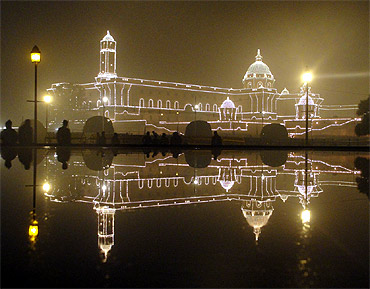


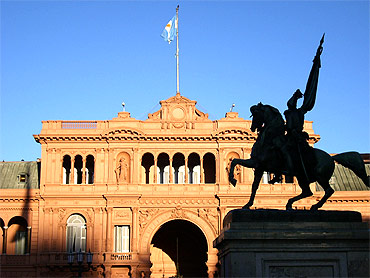



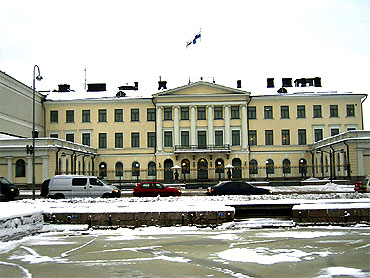

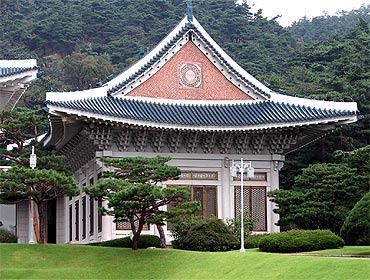
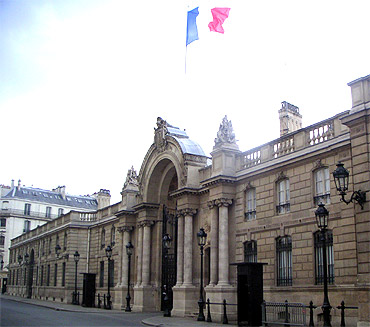

article